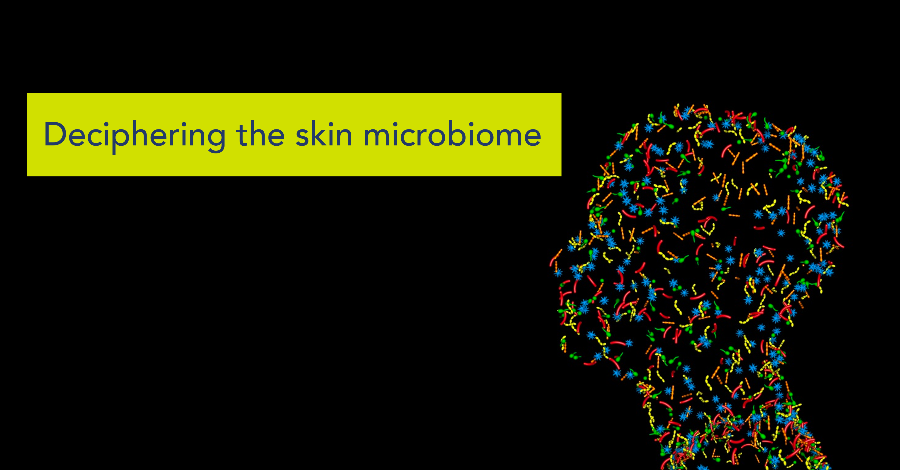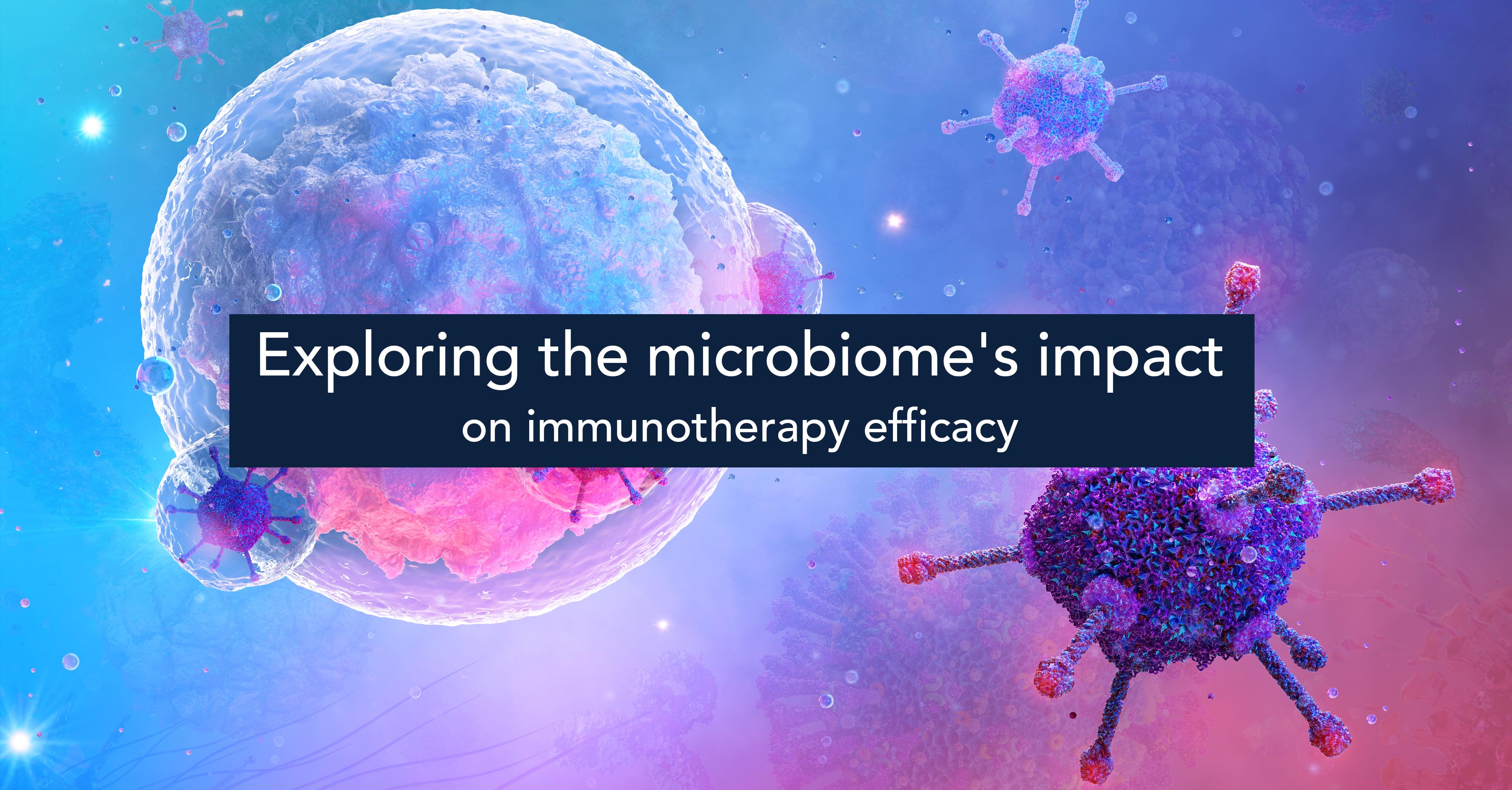Deciphering the skin microbiome

There has been a centuries-old hypothesis that the normal flora of microbes in and on the human body had some impact, either harmful or beneficial, on human life. But now we know that the thousands of species and trillions of these microbial organisms that constitute the diverse human microbiome play a critical role in human physiology and disease.
The human microbiome
The Human Microbiome Project (HMP), established in 2007, has catalogued a 32 terabyte reference dataset of microbial communities associated with five different regions in the human body – nasal passages, oral cavity, skin, gastrointestinal tract, and urogenital tract – based on samples collected from 300 healthy individuals. The 360:1 ratio of bacterial protein-coding genes to human genes could possibly suggest that microbiomes contribute more to human survival than human genes.
The gut microbiome
The gut microbiome, in particular, a gastrointestinal community of microorganisms with diverse phylogenetic backgrounds, has emerged as a significant contributor to several biological processes, including metabolism, nutrition, and immunity. Meta-omics research has revealed that the human gut microbiome is etiologically relevant to several pathologies, including inflammatory bowel disease, diabetes, hypertension, obesity, colorectal cancer, and cardiovascular disease, and could therefore have considerable potential as a therapeutic target.
In addition, the microbiome has also been proposed as a druggable target with recent studies revealing extensive bidirectional drug-microbiome interactions that could be critical to understanding drug efficacy and how different patients metabolize and respond to different treatments.
Modern omics techniques, such as marker-based microbiome profiling, shotgun metagenomics, metatranscriptomics, metaproteomics, and metabolomics, have made it relatively simpler to identify and understand host-microbiome and drug-microbiome interactions. Large-scale studies integrating gut microbiome profiles with host clinical blood phenotypes, dietary, medical history, and lifestyle data, can accelerate the shift to precision medicine and microbiome-targeted drug discovery.
Meanwhile, a similar trajectory is being played in the world of cosmetics and dermatology, with skin microbiome studies creating the foundations for personalised cosmetics and precision therapies for skin disorders.
The skin microbiome
Compared to the gut, the skin is a dry, salty, acidic, nutrient-poor inhospitable expanse. Nevertheless, the largest organ in the human body is home to trillions of bacteria, fungi, and viruses with a microbiota diversity that is possibly higher than that in the gut microbiome.
Regional variations, for instance in temperature, humidity, sebaceous gland density etc., in the topography of the skin, create distinct ecosystems that favour different communities of commensal microorganisms. As a result, skin microbiota is a complex network that varies significantly in terms of diversity, density, and composition. This variability is further influenced by a range of intrinsic (age, gender, ethnicity, etc.) and extrinsic (lifestyle, hygiene, cosmetics/antibiotics usage, etc.) factors.
Over the years, research has established the role of skin microbiomes in host immune interactions, wound healing, colonization resistance, and various skin disorders.
Given the strong symbiotic relationship between skin microbiota and host immune functions, any dysbiosis or imbalance of the microbiome influences keratinocyte regulation, homeostasis, and skin barrier function. A deeper understanding of the relationship between the skin microbiome and the barrier function of the epidermis could accelerate the development of innovative cosmetics and transdermal drugs. Identifying the “core” microbiome of psoriasis and understanding its role in pathogenesis can open up new therapeutic strategies. The possibility of manipulating the human skin microbiome, through skin microbiome transplantation, bacteriotherapy, etc., creates novel therapeutic applications. Defining the important regulatory role of skin microbiomes in the ageing process can seed new approaches for targeted microbial therapy.
However, there are some key challenges to be addressed before we can build a comprehensive understanding of skin microbiomes.
Challenges of analysing skin microbiota
Skin microbiome studies typically relied on culture-dependent assays, with the primary challenge being that less than 1% of microbial species can be cultivated. However, the emergence of omics technologies has considerably expanded the scope for more comprehensive skin microbiota analysis.
There still are some significant challenges, some stemming from the inherent complexity of skin microbiomes and others from the limitations of conventional bioinformatics tools and technologies.
As already noted, there can be huge variations in microbiome composition based on biogeography and a whole range of other intrinsic/extrinsic factors. In addition, mapping specific bacteria to a specific process continues to be a challenge that requires more systematic genetic and functional profiling.
We also need more functional insights into the host pathways influenced by skin microorganisms and the impact of host-microbiome interactions on higher-level skin properties. We need to decode host-microbe interactions at the level of individual microorganisms and as a microbial community. And finally, we must be able to quantify these interactions across different groups of individuals.
As a result, microbiome studies generate huge volumes of complex, multimodal and multidimensional data that can throw up all kinds of challenges in data management, processing, analysis, cross-study comparison, etc. Skin microbiome analysis requires an integrated analytical framework that can seamlessly scale from individual host-microbe interactions to the community level impact of skin microbiomes and on to different groups of individuals.
Skin microbiome analysis – The BioStrand approach
Conventional solutions are often limited either by the number of data sources or the ease with which they can be normalised and integrated. BioStrand’s multidimensional information model is designed to scale across all data relevant to your microbiome research. This means that you start with a knowledge base that is considerably broader and richer than that feasible with other approaches.
Unifying all research-relevant data under one analytical framework simplifies and streamlines the process of identifying unknown functions and clustering and stratifying microbial make-up and functions. This integrated approach also enables pathway analysis at scale to discover new and pertinent microbiome interactions.
Microbiome analysis generates large volumes of sequencing reads that must be mapped to the right microorganisms. Conventional techniques that align reads based on similarity can be extremely time-consuming and compute intensive. Moreover, purely similarity-based approaches to alignment retrieve a lot of lower per cent identity results that can be especially problematic in microbiome analysis where even subtle distinctions between microbes matter.
In contrast, the BioStrand approach maps reads based on HYFT™ patterns, unique signature sequences in all biological data. Using HYFTs™, all research data can be pre-indexed and integrated and combined with our proprietary pangenomic knowledge database with over a billion biological data points. This patented technology also makes it much easier to isolate different microorganisms within the microbiome and to identify their unique function.
The BioStrand approach is significantly faster, we can classify one billion reads in around 12 hours, the SaaS model makes it more cost/compute efficient, and, most importantly, the HYFT™ framework returns results with a high degree of accuracy.
The effective analysis of skin microbiome composition and function is critical to unlocking innovation in precision beauty products and therapies. Conventional technologies and frameworks require a collage of tools and cumbersome multi-step procedures that are tedious, resource intensive, and error prone. With BioStrand, skin microbiome researchers have access to one unified and integrated platform that accelerates time-to-insight without compromising accuracy or efficiency.
Subscribe to our Blog and get new articles right after publication into your inbox.
Subscribe to our blog:






